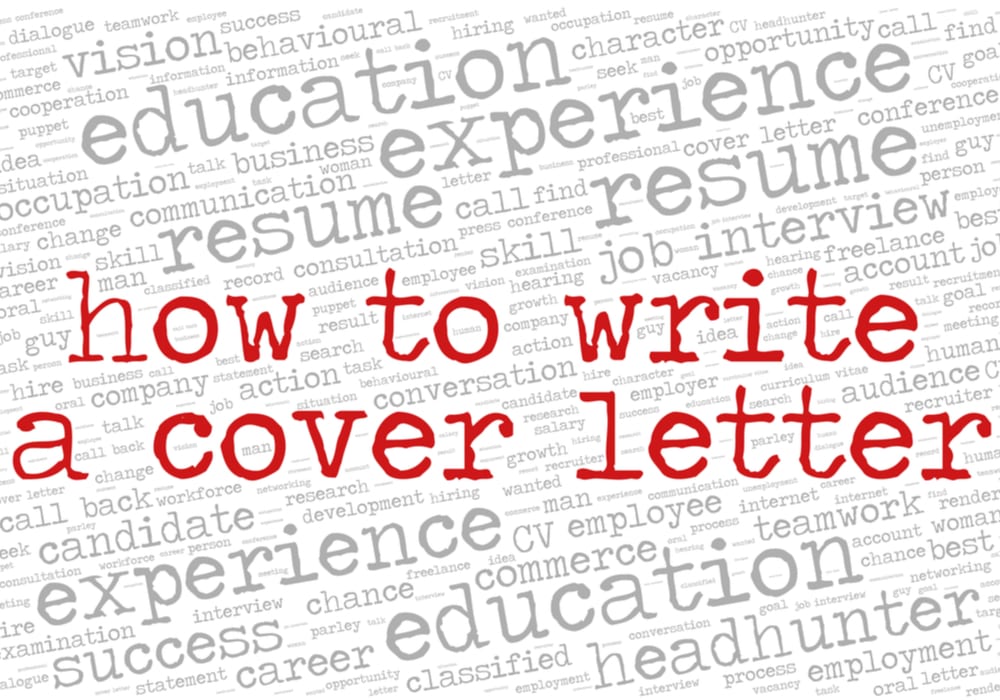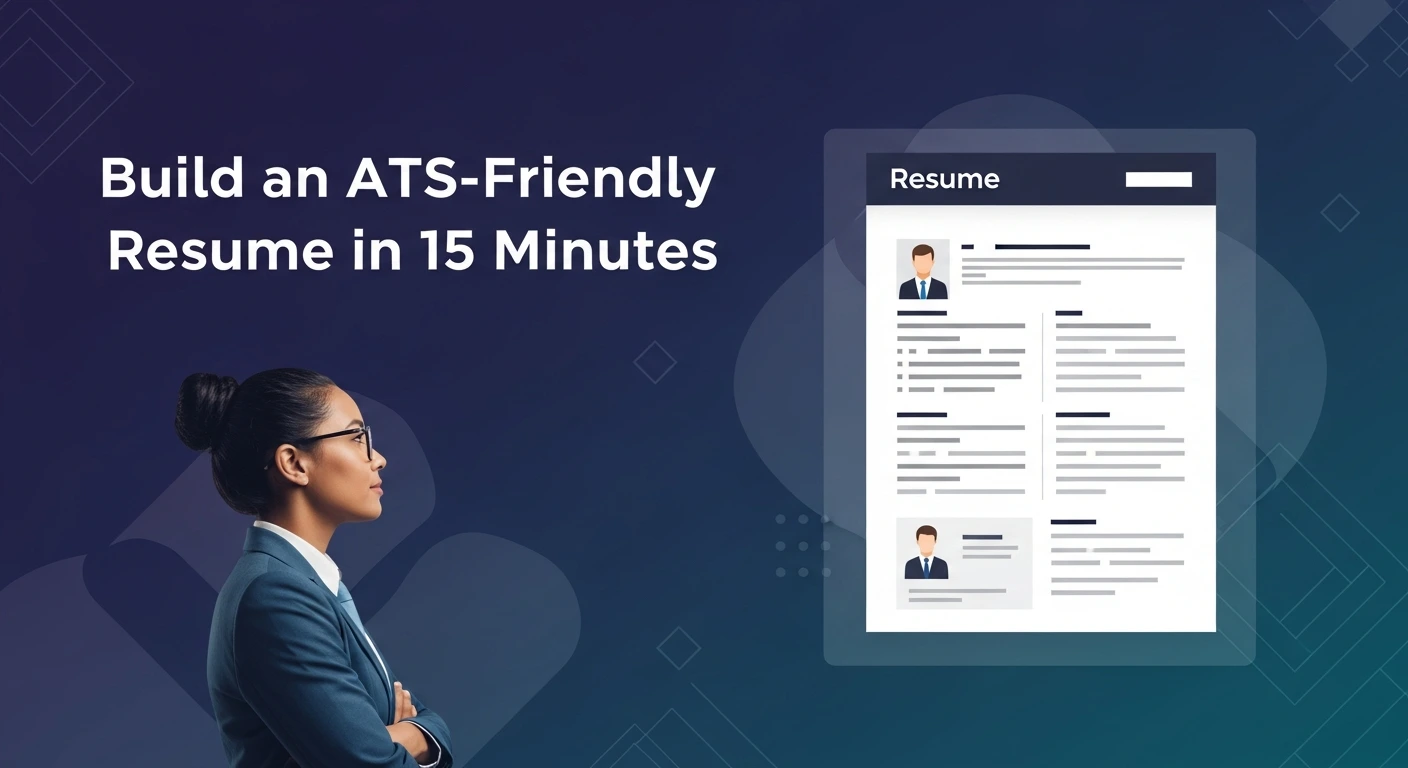Introduction
Ah, the art and science of narrating our professional tales! "How to write a professional background" becomes a pivotal query, especially when we find ourselves standing at the crossroads of opportunities, doesn’t it? Imagine crafting a narrative that isn’t merely a chronicle but a vibrant mosaic of your journey, skills, and aspirations. Your professional background isn’t just a static list of jobs and qualifications; it’s a dynamic, evolving story that encapsulates your personal brand and journey in the corporate arena. As we delve into the intricacies of creating a compelling professional background, we’ll explore not just the ‘how’ but also sprinkle in some inspiring professional background samples to illuminate our path. Together, let’s weave a tapestry that doesn’t just enumerate our experiences, but resonates, reverberates, and etches our professional anthem into the minds of potential employers, partners, and peers alike!
A professional background refers to the professional experience and work history of your previous job. This is used during the job application process. The professional background gives a highlight about your work experience, positions and relevant achievements. When you apply for a new job, the potential employer gets an overview of your previous roles and experience that makes you suitable for the positions.
Importance of Professional Background
Top 10 Importance of professional Background
- First Impressions Matter: Your professional background often serves as the first impression you make on employers, clients, or colleagues, showcasing your expertise and experience in a nutshell.
- Career Narration: It succinctly narrates your career journey, highlighting pivotal moments, achievements, and transitions in a coherent and compelling manner.
- Skill Demonstration: Clearly illustrates your skill set, expertise, and areas of knowledge, providing a snapshot of what you bring to the table.
- Credibility Establishment: A well-crafted professional background enhances your credibility by showcasing your qualifications, certifications, and experiences in a structured format.
- Networking Tool: Acts as a powerful networking tool, enabling you to connect with like-minded professionals, potential employers, or collaborators by showcasing your career trajectory and aspirations.
- Opportunity Magnet: Attracts relevant opportunities by aligning your demonstrated experience and skills with the needs of potential employers or clients.
- Personal Branding: Plays a crucial role in building and reinforcing your personal brand, helping you stand out in the competitive professional landscape.
- Confidence Booster: Having a well-articulated professional background boosts your confidence during interactions, interviews, and presentations, as it serves as a reminder of your accomplishments and capabilities.
- Career Development: Aids in career development by helping you reflect on your professional journey, identify gaps, and plan future career moves strategically.
- Global Reach: In the digital age, a professional background can traverse geographical boundaries, enabling you to connect with international opportunities and global networks.
- Reflection and Goal Setting: Writing and updating your professional background encourages reflection on your career path and helps in setting and refining career goals.
Adding a professional background to your application can help you to make your application stand out from others. Depending on the company, employers or the hiring managers often have thousands of applications to review for a particular role within a limited time frame. Going deeply with each application is not possible during the first phase of the hiring process. The professional background section on your application will help employers or hiring managers to get an idea about your qualification and work experience.
On average, a recruiter or hiring manager takes 6-8 seconds to screen each resume, which means they don’t have enough time to waste on reading the whole content. It’s your responsibility to grab the attention of the reader and sell yourself as the best candidate for the job. It will also help recruiters to save their time when they are dealing with hundreds or thousands of applications from other candidates.
The professional background shows almost everything that an interviewer or hiring managers want to know about the candidates regarding their previous work experience and qualifications. It also demonstrates that you are an organized person and explaining things clearly. As a result, it is easier to explain your qualification and professional journey to the interviewer.
Create ATS-Friendly Resumes in Minutes
Use our free resume builder to craft a professional, ATS-friendly resume quickly. Choose from customizable templates, tailor layout and design, and download in PDF. Start building your career-ready resume today.
Also Read: 20 Free Resume Templates to download
Professional Background Information
A professional background encompasses a broad spectrum of information related to an individual's career journey, skill set, achievements, and experiences. It serves as a comprehensive overview that reflects not only where a person has been in their career but also provides hints about their future trajectory. Here's a breakdown of the key components typically included in professional background information:
1. Educational Qualifications
- Degrees obtained, institutions attended, and years of graduation.
- Relevant coursework, thesis, or projects.
- Academic honors, awards, and scholarships.
2. Work Experience
- A chronological or functional list of positions held, including company names, locations, and dates of employment.
- Descriptions of roles, responsibilities, and key achievements in each position.
- Technologies used, methodologies applied, and skills gained.
3. Skills and Expertise
- Technical, soft, and hard skills relevant to the industry or role.
- Proficiency levels and any certifications obtained in specific skills.
- Examples of projects or tasks where these skills were applied.
4. Certifications and Professional Development
- Certifications, courses, and workshops attended.
- Names of certifying bodies, dates of certification, and validity.
- Skills or knowledge acquired through these certifications.
5. Awards and Honors
- Professional awards, recognitions, and honors received.
- The awarding bodies and the reasons for receiving the awards.
6. Professional Affiliations
- Memberships in professional organizations, societies, or groups.
- Positions held within these organizations, if applicable.
- Contributions to these affiliations, such as articles published, events organized, or committees served.
7. Volunteer Experience
- Organizations worked for, roles undertaken, and duration of service.
- Skills utilized and experiences gained during volunteer activities.
8. Publications and Presentations
- Articles, blogs, research papers, or books published.
- Conferences, webinars, or events where you presented.
- Topics, dates, and locations of your publications and presentations.
9. Projects
- Significant projects worked on, including roles, responsibilities, outcomes, and technologies used.
- Project duration, team size, and your contributions.
10. Personal Statement or Summary
- A brief overview of your career, highlighting key achievements, skills, and career aspirations.
- Your professional philosophy, areas of interest, and what you’re seeking in your next role or project.
11. Languages
- Languages spoken and the level of proficiency in each (e.g., native, fluent, intermediate, basic).
12. Additional Information
- Any other relevant information that doesn’t fit into the above categories, such as hobbies or interests that are pertinent to your professional persona.
Crafting a comprehensive professional background requires a blend of factual data, strategic presentation, and a touch of personal branding to ensure that it accurately and compellingly represents your career journey. It's essential to keep it updated, accurate, and tailored to the opportunities you’re seeking, ensuring it remains a relevant and powerful tool in your professional toolkit.
Professional Background samples
Creating a professional background involves blending your educational qualifications, work experience, skills, and achievements into a cohesive narrative. Below are a few samples tailored for different roles:
1. Marketing Manager Summary: Dynamic Marketing Manager with over 8 years of experience in developing impactful marketing strategies in the retail sector. Proven ability to drive brand success with data-driven campaigns and team leadership. Adept at utilizing SEO, SEM, and content marketing to elevate brand presence and generate leads. Key Achievements: Spearheaded a digital campaign that boosted online sales by 25% in one quarter. Led a team that won the XYZ Marketing Excellence Award in 2021. Skills: Digital Marketing, Team Leadership, SEO, SEM, Content Creation, Analytics
2. Software Engineer Summary: Detail-oriented Software Engineer with 5 years of experience specializing in backend development using Python and Java. Demonstrated expertise in developing scalable and efficient backend systems for e-commerce platforms, ensuring seamless user experiences. Key Projects: Developed a customer management system that improved client retention by 20%. Led the backend team in creating a robust inventory management system. Skills: Python, Java, SQL, System Optimization, Backend Development
HR Specialist Summary: Empathetic and strategic HR Specialist with 6 years of experience in talent management and employee relations. Skilled in developing and implementing HR policies, conducting recruitment drives, and enhancing employee satisfaction. Key Achievements: Reduced employee turnover by 15% through the implementation of a new employee engagement program. Successfully recruited a team of 50+ employees for a new department within 2 months. Skills: Recruitment, Employee Relations, Policy Development, Talent Management
Financial Analyst Summary: Analytical Financial Analyst with 7 years of experience in budgeting, forecasting, and financial reporting. Proven ability to provide key insights through data analysis to drive business decisions and optimize financial performance. Key Achievements: Identified cost-saving opportunities that reduced annual operating costs by 10%. Provided financial models that contributed to a 20% increase in annual profit. Skills: Financial Modeling, Data Analysis, Budgeting, Forecasting, Reporting
Research Scientist Summary: Dedicated Research Scientist with a PhD in Microbiology and 8 years of experience in conducting research on antibiotic-resistant bacteria. Published in 5 international journals and committed to developing viable solutions to global health challenges. Key Projects: Led a research project that identified 3 potential compounds for combating antibiotic resistance. Collaborated on a project that received a $500,000 grant for research into novel antibiotics. Skills: Microbiology, Data Analysis, Project Management, Grant Writing
ales Representative Summary: Results-driven Sales Representative with 4 years of experience in the technology sector. Expert in establishing and growing client relationships, exceeding sales targets, and strategic sales planning. Key Achievements: Consistently exceeded quarterly sales targets by at least 15%. Secured 3 high-value contracts contributing to 20% of the annual revenue. Skills: Relationship Building, Sales Strategy, Contract Negotiation, Customer Retention
How to Structure your Professional Background
Structuring your professional background effectively is crucial to presenting your career journey, skills, and achievements in a coherent and compelling manner. A well-organized professional background can significantly enhance your visibility and appeal in the professional realm, whether it’s on your resume, LinkedIn profile, or a personal website. Here’s a guide on how to structure your professional background:
1. Header
- Full Name: Clearly stated.
- Contact Information: Including phone number, email, and LinkedIn profile or portfolio link.
- Professional Title: Such as your current role or area of expertise.
2. Personal Statement or Summary
- A concise, impactful paragraph that encapsulates your career trajectory, key skills, and professional aspirations.
- Tailor it to align with the role or opportunity you’re targeting.
3. Educational Qualifications
- List your degrees in reverse chronological order.
- Include the degree title, institution name, and year of completion.
- Mention any relevant coursework, thesis, or honors.
4. Professional Experience
- Present your work history in reverse chronological order.
- Include job title, company name, location, and duration of employment.
- Detail your roles, responsibilities, achievements, and impact in bullet points.
- Highlight any key projects, clients, or campaigns you worked on.
5. Skills and Expertise
- Enumerate technical, soft, and industry-specific skills.
- Consider including a mix of skills that align with your career and targeted opportunities.
6. Certifications and Professional Development
- List relevant certifications, courses, and workshops.
- Include the certifying body and date of completion.
7. Awards and Honors
- Mention any awards or recognitions received in your career.
- Include the awarding body and date.
8. Professional Affiliations
- Detail memberships in professional organizations or societies.
- Mention any active roles or contributions within these affiliations.
9. Volunteer Experience
- Include any relevant volunteer work, specifying the organization, role, and duration.
- Highlight skills utilized and any noteworthy outcomes.
10. Publications and Presentations
- List any articles, papers, or presentations, including the title, publication/forum, and date.
- Provide links or citations for accessibility.
11. Projects
- Detail significant projects, specifying your role, technologies used, and outcomes.
- Include the project duration and any notable achievements.
12. Languages
- Mention languages spoken and your proficiency level (e.g., basic, intermediate, fluent).
13. Additional Information
- Include any other pertinent information, such as hobbies, interests, or additional qualifications that may be relevant to your professional persona.
Tips for Structuring:
- Be Concise: Use clear and concise language, avoiding jargon and overly complex terms.
- Use Bullet Points: Enhance readability and scan-ability.
- Tailor Content: Customize the content to align with the specific role or opportunity you’re targeting.
- Use Action Words: Start bullet points with action verbs, such as “led,” “developed,” or “achieved.”
- Quantify Achievements: Where possible, use quantifiable data to highlight your impact and achievements.
- Update Regularly: Ensure your professional background is current and accurately reflects your career.
Also Read: Common Grammar Mistakes to Avoid on Your CV
Tips for writing Professional Background
Writing a compelling professional background requires a blend of strategic presentation, authenticity, and a dash of personal branding. Here’s a collection of tips to guide you through crafting a professional background that not only narrates your career journey but also resonates with your target audience:
1. Start with a Strong Opening:
- Craft a compelling personal statement or summary that encapsulates your experience, skills, and aspirations.
- Tailor it to align with your career goals and the opportunities you’re targeting.
2. Be Concise and Relevant:
- Use clear, concise language and keep information relevant to the role or industry you’re targeting.
- Avoid jargon and ensure your background is accessible to a broad audience.
3. Highlight Achievements:
- Focus on accomplishments and impact, not just responsibilities.
- Use quantifiable data to showcase your achievements (e.g., “increased sales by 30%”).
4. Use Action Verbs:
- Start bullet points and sentences with action verbs like “led,” “developed,” or “achieved” to convey your contributions effectively.
5. Tailor Your Content:
- Customize your professional background for specific opportunities or industries.
- Highlight experiences and skills that align with what your target audience is looking for.
6. Showcase a Range of Skills:
- Include a mix of technical, soft, and hard skills.
- Provide examples of how you’ve applied these skills in your career.
7. Include Certifications and Continuous Learning:
- Mention relevant certifications, courses, and workshops that showcase your commitment to continuous learning.
- Ensure to include the certifying body and date of completion.
8. Professional Affiliations and Volunteer Work:
- Include memberships in professional organizations and any active roles or contributions.
- Mention relevant volunteer work, highlighting skills and experiences gained.
9. Ensure Readability:
- Use bullet points, headers, and short paragraphs to enhance readability.
- Avoid large blocks of text and ensure your background is easy to skim-read.
10. Proofread Thoroughly:
- Ensure your professional background is free from typos, grammatical errors, and inaccuracies.
- Consider asking a colleague or mentor to review and provide feedback.
11. Use a Professional Tone:
- Maintain a professional and positive tone throughout.
- Avoid using slang or overly casual language.
12. Update Regularly:
- Keep your professional background updated with recent experiences, skills, and achievements.
- Ensure all information is current and accurate.
13. Include Keywords:
- Integrate keywords relevant to your industry and role to enhance visibility on online platforms and ATS (Applicant Tracking Systems).
14. Add a Personal Touch:
- While maintaining professionalism, don’t be afraid to let your personality shine through.
- Mention interests or experiences that add a unique flavor to your professional persona.
15. Be Honest:
- Ensure all information is accurate and verifiable.
- Avoid exaggerating achievements or qualifications.
Your professional background is a pivotal tool in your career development, acting as a window through which potential employers, clients, and networks view your career journey and potential. Crafting it with diligence and strategy can significantly enhance your professional appeal and open doors to new opportunities.
Where to put your Professional Background
You can put your professional background at the top of your application. It can be put below the contact details but above the list of previous experiences. By doing this, the recruiter or the hiring managers will see your professional background first which will give the most important details about your work experience right away.
You can also put your professional background in smart places such as on your LinkedIn profile. Around 90% of recruiters scan LinkedIn profiles to search for candidates. You can add your professional background in the “About” section of your LinkedIn page; it will make a good impression on the recruiter. If you have your own personal website then you can add the professional background to the “About Me” page. Most of the recruiter or employer can learn about you easily on this page. You can define your professional background summary, along with bullet points of your experiences and key skills.
Now you have got a clear understanding of your professional background, it’s time to create your own summary. Professional background is not important only for job search, so you can also add on the things if you are not looking for the opportunities. A professional background summary may force recruiters or hiring managers to read the rest of your resume. Additionally, a perfect professional background summary demonstrates your professionalism and etiquettes, which are in demand interpersonal skills that employers are looking for. So take your time to compose your professional background summary to express yourself better during the interview.






